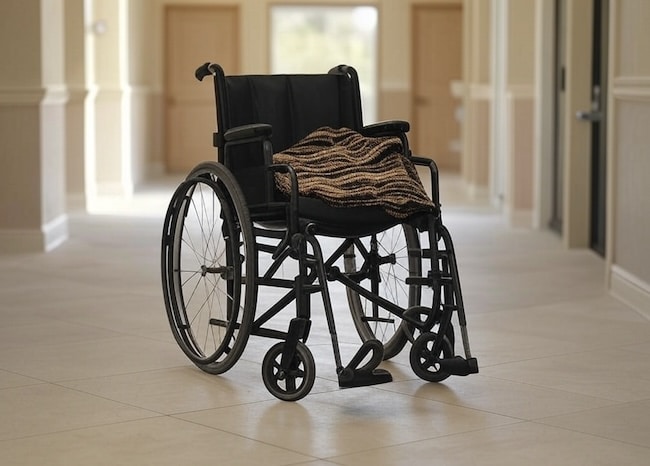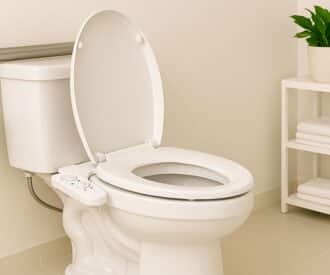Finding the right wheelchair can significantly improve mobility, independence, and quality of life for seniors, but with so many types and features available, choosing the best option can feel overwhelming. From lightweight transport chairs to power wheelchairs with customized support, each style serves different needs and lifestyles.

In this comprehensive guide, we break down the six main types of wheelchairs for seniors, explore useful accessories for comfort and safety, and explain what Medicare covers and what it may not. Whether you're selecting a wheelchair for occasional use or daily mobility, these insights will help you make an informed decision for yourself or a loved one.
Choosing WheelChairs For Seniors Can Seem Complicated
Did you know that there are many different types of wheelchairs, each with its unique features? If your older adult needs a wheelchair, learning about the available types helps you choose the one that best fits their mobility needs and health conditions. Vive Health provides an overview of the six main types of wheelchairs for seniors, including features and accessories, as well as Medicare coverage.
Wheelchairs for Seniors Come In a Variety of Sizes and Weights
If you’re in the market for a manual wheelchair for your older adult, you may be surprised to learn that manual wheelchairs come in a variety of sizes, weights, and features.
For example, someone who has generally good mobility but needs a wheelchair for longer distances might choose a basic, lightweight wheelchair.
Someone with more severe mobility limitations might need a specialty wheelchair that allows caregivers to help them get in and out easily.
This quick overview describes six different types of manual wheelchairs, helpful features and accessories, and how to get one that Medicare covers.
Manual Wheelchairs for Seniors: Six Options to Consider
1. Ultra-lightweight and lightweight wheelchairs
Manual wheelchairs typically weigh between 25 and 40 pounds. They work well for travel and are easier to lift in and out of the car for quick errands.
These lightweight chairs are often constructed with titanium, carbon steel, or aluminum. They have large back wheels with much smaller front wheels.
These wheelchairs allow a person to push themselves. Or, caregivers can use the gripped handles to help an older adult in the chair.
2. Standard wheelchairs
Similar to lightweight manual wheelchairs, standard wheelchairs also have large back wheels and small front wheels. The difference is that they weigh more than lightweight wheelchairs.
For people with enough upper body strength, these are the most common types of wheelchairs. Of course, caregivers can also push these using the handles.
3. Bariatric and heavy-duty wheelchairs
Heavier people can benefit from heavy-duty wheelchairs that are engineered with stronger frames and large seats to support those who weigh between 300 and 700 pounds.
Designed for ample weight disbursement, heavy-duty chairs may feature a reclining seat and also make it easier for a caregiver to manually push their older adult without using excessive force.
4. Tilt and recliner wheelchairs
If an older adult needs help from two or more people to get in and out of bed or onto the toilet, a wheelchair with a tilting or reclining seat could be helpful.
These types of manual wheelchairs allow a caregiver to lower the backrest safely towards the ground and then, with the help of another person, lift the older adult out of the chair and onto a bed or recliner.
5. Transport wheelchairs
Transport wheelchairs are often used in hospital settings but are also available for use at home.
They’re different from standard wheelchairs because they have small back and front wheels — instead of large back wheels and small front wheels.
This means that the person sitting in the wheelchair can’t propel themselves. They need to be pushed by someone else.
Transfer wheelchairs are usually lightweight and are suitable for short outings. However, the small wheels might not roll as well over outdoor terrain as the larger wheels of a standard wheelchair.
6. Other types of wheelchairs
There are also various specialty wheelchairs available to suit different needs.
For example, pediatric wheelchairs are specifically designed for children, sports wheelchairs are for athletes with disabilities, and hemi-height wheelchairs are for people who use their feet to propel the wheelchair.

Wheelchairs for Seniors: Special Features and Accessories
The features and accessories that maximize their wheelchair’s comfort and usefulness will depend on your older adult’s needs.
Special Wheelchair Accessories for Seniors:
- Gel or memory foam seat cushions
- Cushioned or structured backrest
- Armrests
- Ergonomic arm pads
- Leg rests
- Headrest (removable)
- Seat (or safety) belts
- Snow or beach wheels
- Utility lighting
Does Medicare Cover Wheelchairs?
If a wheelchair is medically necessary and your older adult has Medicare Part B, it could be partly or completely covered.
Wheelchairs are considered durable medical equipment (DME). That means getting Medicare to cover it requires a written order from a doctor and renting or purchasing it directly from an approved DME provider.
To help your older adult get the wheelchair that best suits their needs, talk with their doctor and research the different types available.
You may also want to look for a local DME company that’s Medicare-approved. And if you have any questions about coverage, call Medicare at 1-800-MEDICARE to find out.
Keep in mind that the timelines for processing and receiving a wheelchair can take anywhere from a couple of weeks to months.
Recommended for you:
- 3 Ways to Get the Home Medical Equipment That Seniors Need: Wheelchairs, Hospital Beds, and More
- Finding Used Medical Equipment
- 3 Inexpensive Door Updates Make Aging in Place Easier and Safer
Guest contributor: Jessica Hegg is the content manager at ViveHealth.com. Interested in all things related to living a healthy lifestyle, she works to share valuable information aimed at overcoming obstacles and improving the quality of life for others.
About the Author
Jessica Hegg
Jessica Hegg is a manager at ViveHealth.com. Ms. Hegg was also a full-time caregiver for her Mom who had Primary Progressive MS and Epilepsy. She is a freelance writer with a passion for cooking and lives in Austin, TX with her Mom and her wonderful husband. You can find her personal blog about caregiving tips, ideas, and solutions at Givea.Care.




